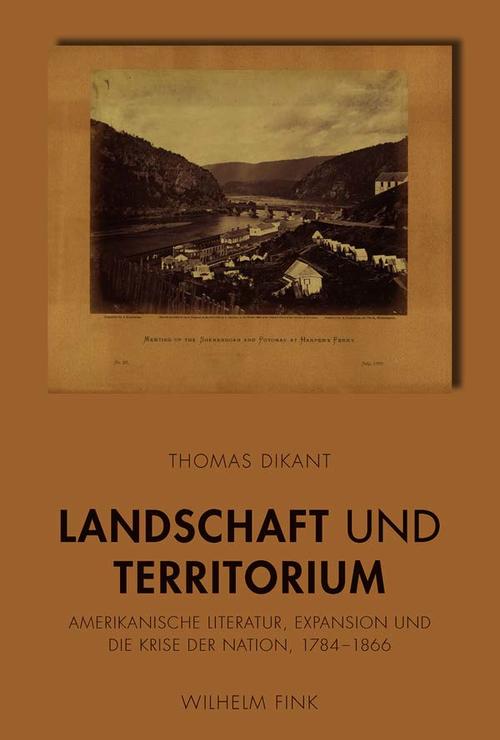Landscape and Territory: American Literature, Expansion, and National Crisis, 1784-1866
Thomas Dikant. Munich: Fink, 2014.
Landscape and Territory: American Literature, Expansion, and National Crisis, 1784-1866 investigates the relation of landscape and territory in American literature, from the first Territorial Ordinance of 1784 to the Civil War and the beginnings of Reconstruction. Whereas previous work on the representation of space in American Studies focused on terms such as the pastoral, landscape, or, more recently, geography, my book introduces territory as a necessary conceptual complement to landscape, and thereby shifts the discussion beyond an ideological critique of landscape without limiting itself to an analysis of non-aesthetic political space. This conceptual shift enables a more precise analysis of the mechanics of how aesthetic and political spaces overlap and interfere with each other in the American national imaginary. Landscape, itself a concept of political origin, is an aesthetic-political mode for representing the territories of the United States. It does so, however, without ever fully containing or covering the territorial, that is, the conflicts and struggles over individually or collectively owned circumscribed spaces. Rather, the territorial both precedes and overshoots its aesthetic representations as landscape or pastoral, and territoriality itself continually returns to upset aesthetic legitimations of expansion and emerging U.S.-nationhood. This process is traced in Landscape and Territory through readings of four canonical authors: Thomas Jefferson, James Fenimore Cooper, Ralph Waldo Emerson, and Herman Melville. What materializes through these readings is a narrative that moves from the spatial imaginary of the newly founded republic, in which the nation is represented primarily as a territorial space, subject to rational organization and potentially infinitely expandable, through the romantic identification of nation, territory, and people symbolized in the form of landscape, to the territorial realities of antebellum America and the transformation of the U.S. territories into theatres of war, in which landscape remains only as an allegory of the suffering of the people and the destruction of a nation. The book concludes with the end of the Civil War, in which the United States is reconstructed once again as a territorial structure, yet one that no longer harbors its original promise of a rationally organized pastoral republic.

